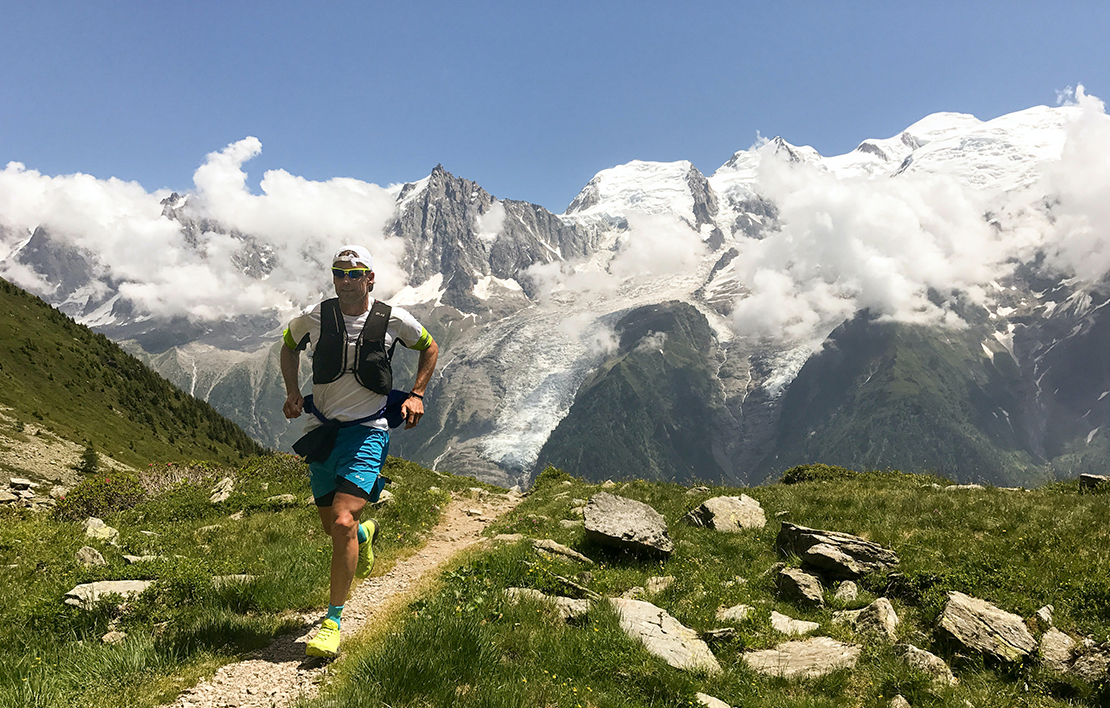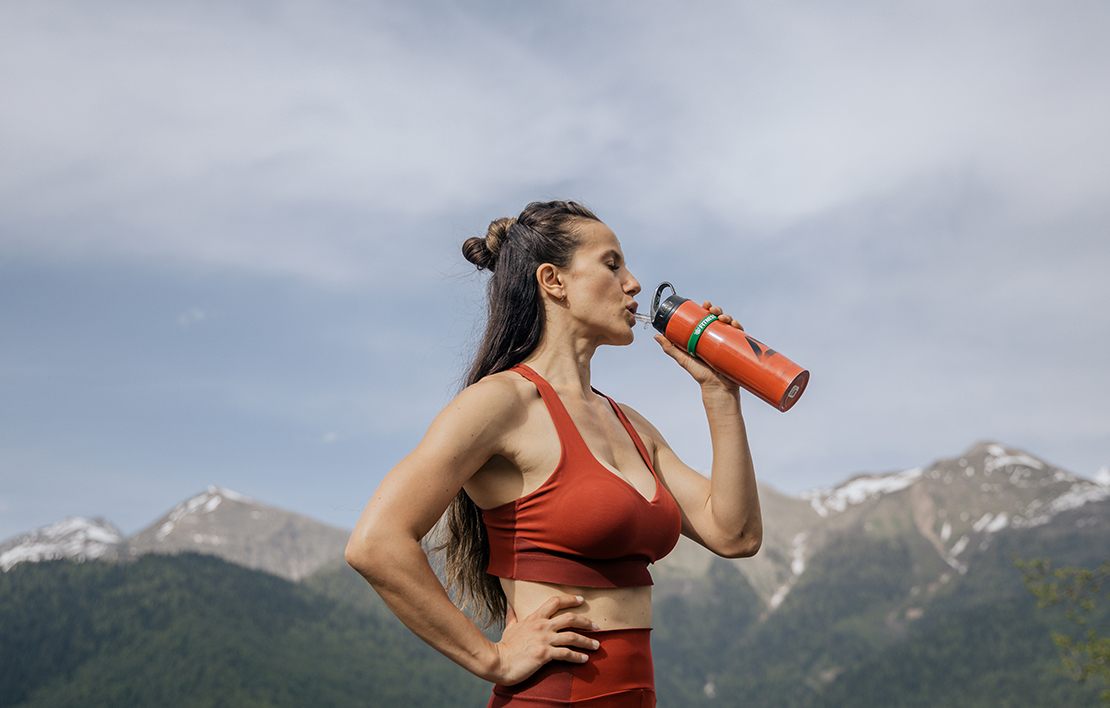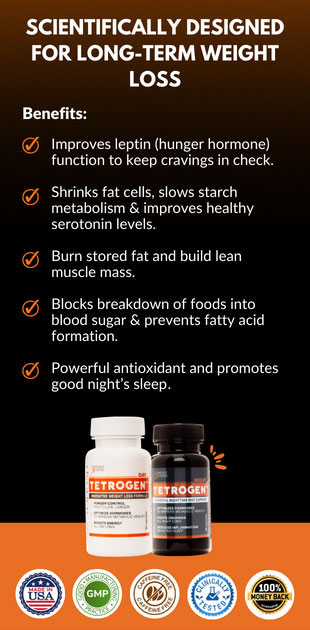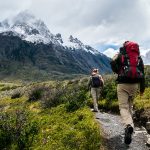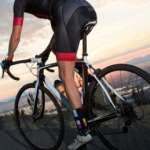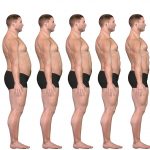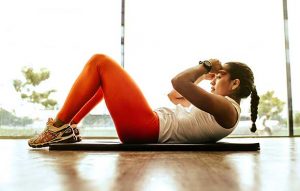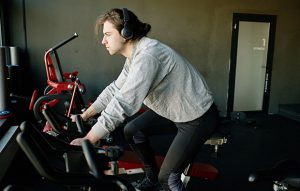
Hiking is gaining popularity in the U.S. Some of this popularity can be traced to movies and books like Wild. The pandemic has also given the activity a boost as more people are seeking exercise away from people. Plus, many gyms are closed. As it turns out, hiking is also extraordinarily healthful. And, it’s fun. If you’re asking, “Is hiking good for reducing belly fat” or “Is hiking a good way to lose fat,” the answer is a definite yes. That is, as long as it’s paired with a healthy diet to create a calorie deficit.
Hiking is now the fourth most popular outdoor activity in America, after running, fishing, and biking. In 2009, 30 million people had hit the trails. By 2017, that number hit 44.9 million. And, that number is only growing.
Is Hiking Good for Fat Loss?
Hiking is one of the best exercises to burn body fat, according to experts. The activity engages different muscles than you may have been hitting in the gym. For example, you’ll work the glutes, quads, hamstrings, hip muscles, and lower legs. But you’ll also work the deep core muscles, the back, and the outer thighs. This is because as you walk over uneven ground, you use both major and smaller stabilizing muscles. You’ll also likely be stepping over logs, large rocks, ditches, and other obstacles. In turn, your body dips into fat stores for energy.
By nature, longer-lasting, low-intensity activity burns more fat. In other words, hiking is a great exercise to hit the fat-burning zone, which is roughly 60 to 70% of the maximum heart rate. In this zone, you can expect to burn 85% of your calories as fats, 5% as protein, and 10% as carbs. However, it’s important to ensure you are hitting that longer duration of at least 45 minutes to an hour to burn stored fat rather than just stored carbohydrates.
Hiking isn’t just good for burning calories and fat. It’s also good for the brain. And you can start enjoying benefits within five minutes of stepping into the great outdoors. One study, for example, found that backpackers improved creativity by up to 50% after 4 days in nature. 1
Compared to walking inside on a treadmill, outdoor hiking has been shown to better improve mood and lead to greater calmness and decreased anxiety. 2 It can also increase energy levels and focus. And the fresh air has been shown to lower blood pressure. Of course, you’ll also get a healthy dose of vitamin D if your skin is exposed to sunlight.
How Many Calories Are Burned During a Hike?
Because we are all different, the answer is, it depends. A few factors that come into play include: 3
- How long you hike—the longer you hike, the more calories you’ll burn.
- How much you weigh—because your body supports your weight as you hike, those who weigh more tend to burn more calories during a given activity. For example, if an average ~198-pound man hikes for an hour at 3 miles per hour, he’ll burn around 460 calories on a cross country hike. On the other hand, an average woman, weighing in at ~171 pounds, would burn 397 pounds.
- The terrain you’re hiking on—you’ll burn more calories if you’re hiking uphill than just trekking cross country. And the steeper the grade, the more calories burned.
- If you are carrying added weight—if you are going on a multiple hour or day hike, you’ll also likely have a pack and extra water. (Please bring extra water!) That added weight helps you burn more calories. And the more weight carried, the more calories burned.
- How fast you’re hiking—you’ll burn more calories if you’re walking at a faster pace. To really scorch the calories, once you’ve built up your strength and endurance, you can also try trail running.
- Wind and weather—for instance, if the wind is gusty, you can burn up to 5% more calories.
How Does Hiking Help You Lose Belly Fat?
Reducing belly fat is an important goal as it’s not just about looking good. Belly fat—especially the deep-down visceral fat—is one of the most dangerous types of fats.
Plus, when fat cells are packed together, they can generate adipose hormones and adipokines. These chemicals can then increase inflammation. And inflammation has been associated with increased risk for heart disease, cancer, strokes, and diabetes. Belly fat may also increase the risk of non-alcoholic fatty liver disease and metabolic syndrome as well as weight gain.
Tips to Lose Fat When Hiking
If you’re new to hiking, it’s vital to ease your way in. Starting as a newbie (or getting back after some time off) without any preparation can lead to soreness and potential injury. So, to stay safe:
- Start small with gentle slopes and a comfortable pace. Build up as you get stronger and used to hiking. Especially if you want to take a longer hike or a backpacking trip, train your body over weeks and even months. Still, if you’re fit enough to climb a set of stairs, you’re fit enough to hike. So, don’t be intimidated if you haven’t been on a trail for a while.
- Remember that you can always make an easy hike harder. (For example, you can walk faster for short bursts). But you can’t make a challenging trail easier. Pick an easier trail if you’re new or haven’t hiked in a while.
- Watch your form. Stand up tall and proud on flat stretches, and walk with your shoulders back but relaxed and the spine up straight. Lead with your chest, not your knees, for proper alignment and to prevent injury. Avoid hunching your back on challenging uphill climbs, and maintain a light squat or bend in the knees for better balance. On downhills, take shorter strides to increase traction and make the trail more manageable.
- Take breaks when you need them, and remember to drink water throughout your hike.
- Vary your pace. You can walk faster or slower. Choose a flatter area or a hillier terrain. The greater the variation, the better the results when it comes to burning belly fat with hiking.
- Burn more calories by using hiking poles. In addition, they can help you better balance and may improve the experience, especially on longer treks.
- Add more water weight—in your backpack, that is. Add at least a quarter of a gallon of water for every mile planned. If you’re going for a long hike, pack some snacks with you too. Good choices include nuts, fruit, or dried meats. (Avoid sugar-loaded store-bought trail mixes. You can make your own healthier versions at home if you choose.)
- Wear comfortable hiking shoes and socks. Your feet will thank you if you give them the support they need and some extra cushion.
- Allow yourself to get mentally lost (as you stay on the trail) and just focus on the beauty of the nature around you. This is a great way to de-stress and get more in touch with yourself.
- Hike with a buddy or in a well-traveled area, and keep your eyes out for wildlife. Keeping a conversation going with a friend can also help you adjust your pace. You should be able to talk easily, in complete sentences, if you’re staying in your fat-burning zone. That goes for downhill sections as well as up.
- Learn hiking protocol in your area and how to best share the trail with other trail users like bikers and horseback riders.
- Don’t forget to cool down and stretch when you finish your hike. Take a few minutes for a deep squat as well as some calf, quad, and hamstring stretches. Then stretch out the upper body too.
- While you may feel like you “earned” an extra cookie, cupcake, or margarita after a long hike, watch those calories. High-sugar, high-calorie foods and drinks can quickly add up to all of the calories you just burned. Mind your portions or, better yet, reward your body with a healthy nutrient-dense meal instead.
Targeting Belly Fat with Hiking
You can’t target fat off of any specific area of the body. Where you lose weight first or last depends on your genetics rather than the type of exercise you engage in. You may lose belly fat first… or it may be the most stubborn area that drops off last. The key is to maintain consistency to lose weight and fat from the entire body.
For even better weight-loss results, it’s also a good idea to mix up your workouts. Go for a hike or two a week, give HIIT a try a time or two, and include some form of weight or resistance training in your weekly routine to help keep your body guessing. In turn, you’ll become stronger, fitter, and healthier. You can also release some stress with some slower, more meditative walks throughout the week.
Now, all that’s left is to go hit the trails and have some fun!
References:
1. Atchley RA, Strayer DL, Atchley P. Creativity in the wild: Improving creative reasoning through immersion in natural settings. PloS One. 2012 Dec 12;7(12):e51474.
2. Niedermeier M, Einwanger J, Hartl A, Kopp M. Affective responses in mountain hiking—a randomized crossover trial focusing on differences between indoor and outdoor activity. PLoS One. 2017 May 16;12(5):e0177719.
3. Hills AP, Mokhtar N, Byrne NM. Assessment of physical activity and energy expenditure: An overview of objective measures. Frontiers in Nutrition. 2014 Jun 16;1:5.

Mike Dorfman is BS in Biochemistry from the University of Colorado. Mike’s has worked as a personal trainer for Gold’s Gym and helped many clients achieve their weight-loss and fitness goals.
To health first, weight-loss second. Mike and Tetrogen are here to help you make the transition to the healthier, happier, and thinner you!
SIGN UP NOW FOR YOUR FREE WEEKLY EMAILS!
Get brand-new healthy recipes (easy ones), tips 'n tricks, and more...
Bonus: Get discount coupons for our products on a subscription!
You will receive one tip per week. You can unsubscribe at any time. We will never share your information with third parties.
